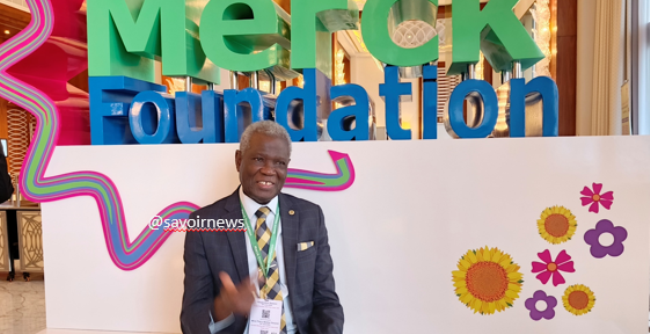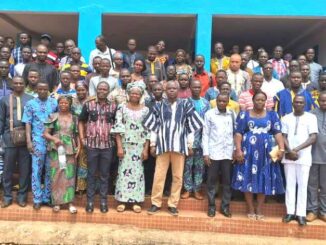
The 7th Merck Foundation First Ladies Summit held on June 18-19, 2025 was marked by a high-level panel discussion led by Professor Oladapo Ashiru OFR (Secretary General of the International Federation of Fertility Societies, IFFS). The panel discussion addressed several issues, including reproductive challenges and advances in fertility medicine. Several factors contribute to conception difficulties today, he explained to our journalist.
Professor Ashiru, could you tell us about the main factors that prevent a woman from getting pregnant?
Professor Oladapo Ashiru : Sexually transmitted diseases, such as gonorrhea, chlamydia, and trachomonas, are well known. But there are also microbiomes, that are still poorly understood, which can cause miscarriages or prevent pregnancy. These are, mycoplasmas, such as ureaplasna urealyticum that can be the cause of infertility and miscarriages.
Then there are environmental toxins. These include heavy metals found in our diet, such as large fish, which contain mercury, or rice, which contains arsenic. These heavy metals, such as lead, are also responsible for infertility.
Heavy metals are also present in many plants grown in Africa, such as tomatoes, yams, etc. Then there are the heavy metals present in the products we apply to our bodies, such as cosmetics. Then there are the products we process, such as pesticides, fumigants, insecticides, or industrial products, such as those from the paint industry. Many men who work in the paint industry end up becoming sterile because the paint destroys sperm. They must protect themselves. The petrochemical and oil industries also pose problems.
Regarding pesticides, do you include those used to kill mosquitoes?
The idea is, yes, when you use these insecticides to kill mosquitoes, when you spray the room, you have to leave the room for about an hour before returning, because you will have killed the mosquitoes. You can then install a mosquito net or other devices to keep it out.
During the discussions, we were surprised to hear you say that women who drive are not spared.
Yes, I think the next level should apply to you, especially women who drive barefoot. Most women take their shoes off to drive because it’s comfortable, but the rubber coating contains heavy metals such as Antimony that can be absorbed by the sole of the feet.The gasoline in food can absorb toxins from the car’s rubber coating, brakes, and accelerator. This coating is made of antimony, and antimony can be very toxic to the embryo, causing a miscarriage, or preventing pregnancy.
Thank you, Professor. As a fertility specialist, could you tell us more about the challenges of embryological research?
In biological research, the difficulty perhaps lies in its high labor intensity, and we now use a lot of labor. In fact, embryology today is much simpler than it was in its early days. Back then, we used glass pipettes and had to make the culture media. Today, the media are manufactured industrially, the pipettes are disposable, which simplifies the task, and we are now approaching a near-automation level. Artificial intelligence is being used in the laboratory to speed things up.
And what is the specific role of AI in the field of embryology?
Yes, the idea is to advance embryo selection. We can select the right embryos and see that artificial sperm are good tools. It’s also now used in micromanipulation to fertilize the embryo and the egg.
Okay. That’s very useful then…
Absolutely! But it doesn’t replace humans. Humans are still necessary.
Okay. Could you tell us if embryology research can contribute to the fight against sickle cell disease, hemophilia, and certain cancers?
We are already using embryology research for sickle cell disease. If both couples have AS, we can select the embryo, biopsy it, and know that it is indeed present. We can then stimulate the eggs of the AS woman and the other AS woman, and obtain this one, thus creating ten embryos. We can now biopsy these embryos and know their genetic composition, and determine which of them are AA, AS, or SS. We have now been able to transfer only the AA embryo to the woman, which will allow us to gradually eliminate sickle cell disease.
Interview by Ambroisine MEMEDE



